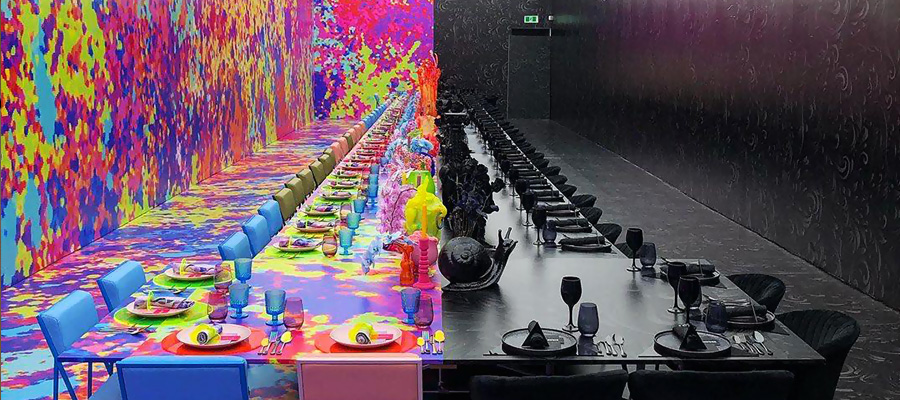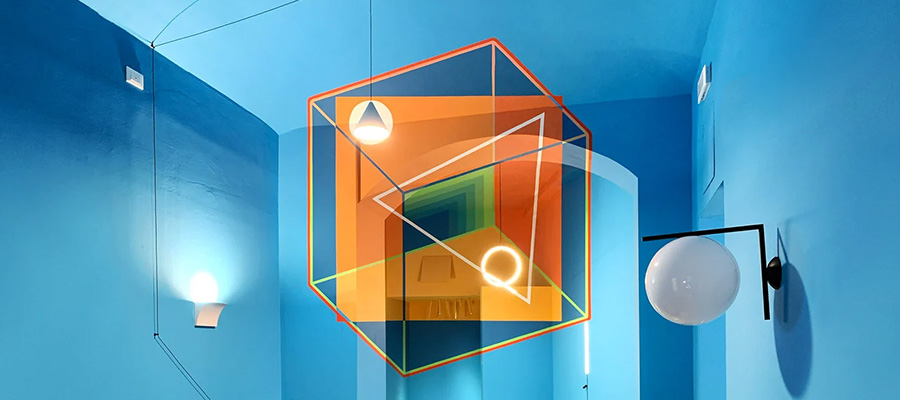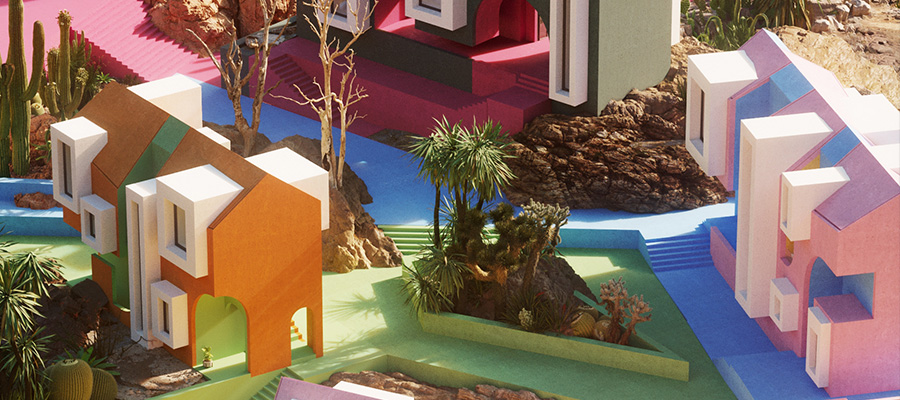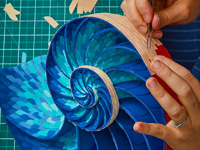From Renaissance symmetry to Contemporary calm. See 12 iconic movements in home interior fashion and what to borrow at home.
We ask a lot of our home interiors. They host families and friends, buffer the workday, and quietly mirror the technologies, trade routes, and tastes of each era. The art of interior design has shapeshifted for centuries; what follows is a brisk tour through 12 movements, each rendered as a single domestic space. Watch ideas migrate, motifs mutate, and materials flex with each new worldview.
Renaissance (c. 1400 to 1600) - Order, Humanism, Geometry
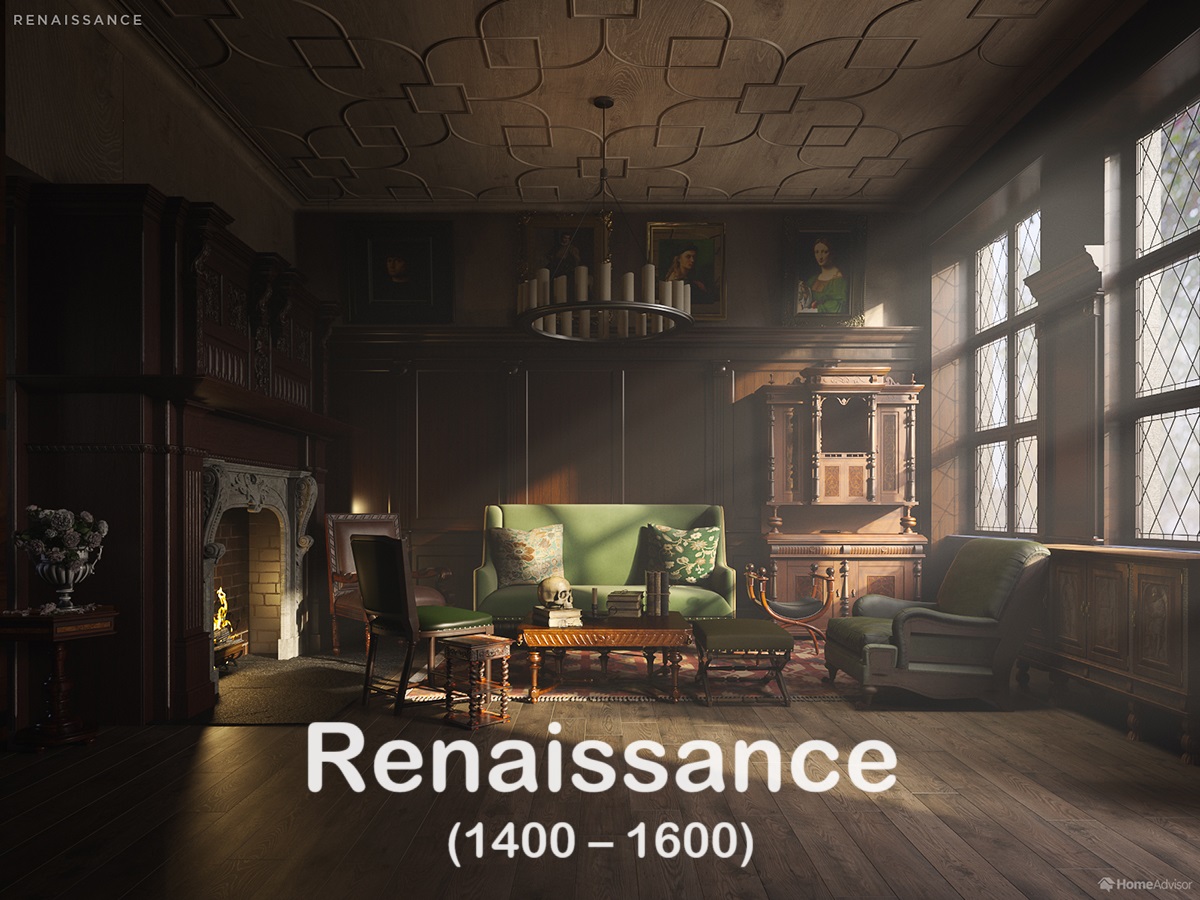
What changed: After a long medieval nap, Europe rediscovers Classicism, perspective, and proportion. Interiors become measured: axial arrangements, mirrored pairs, and geometry worthy of Alberti. Trade routes funnel Ottoman textiles into European homes, so-called Holbein carpets appear in portraits as status you could literally step on.
Signatures: Symmetry, columnar profiles, inlaid woods, carved cabinets that mimic tiny palazzi. Arabesque scrolls and East Asian motifs enter the European repertoire, while geometry supplies harmony.
Borrow it at home
- Pair objects for balance: two lamps, two urns, two framed prints.
- Introduce classical profiles: a columnar mantel, a fluted lamp base, simple wall paneling.
- Choose a geometric wool rug with medallion or lattice to nod to Anatolian patterns.
Wink for art lovers: a print of Holbein’s The Ambassadors turns anamorphosis into cocktail conversation.
Baroque (c. 1590 to 1725) - Theater of Power
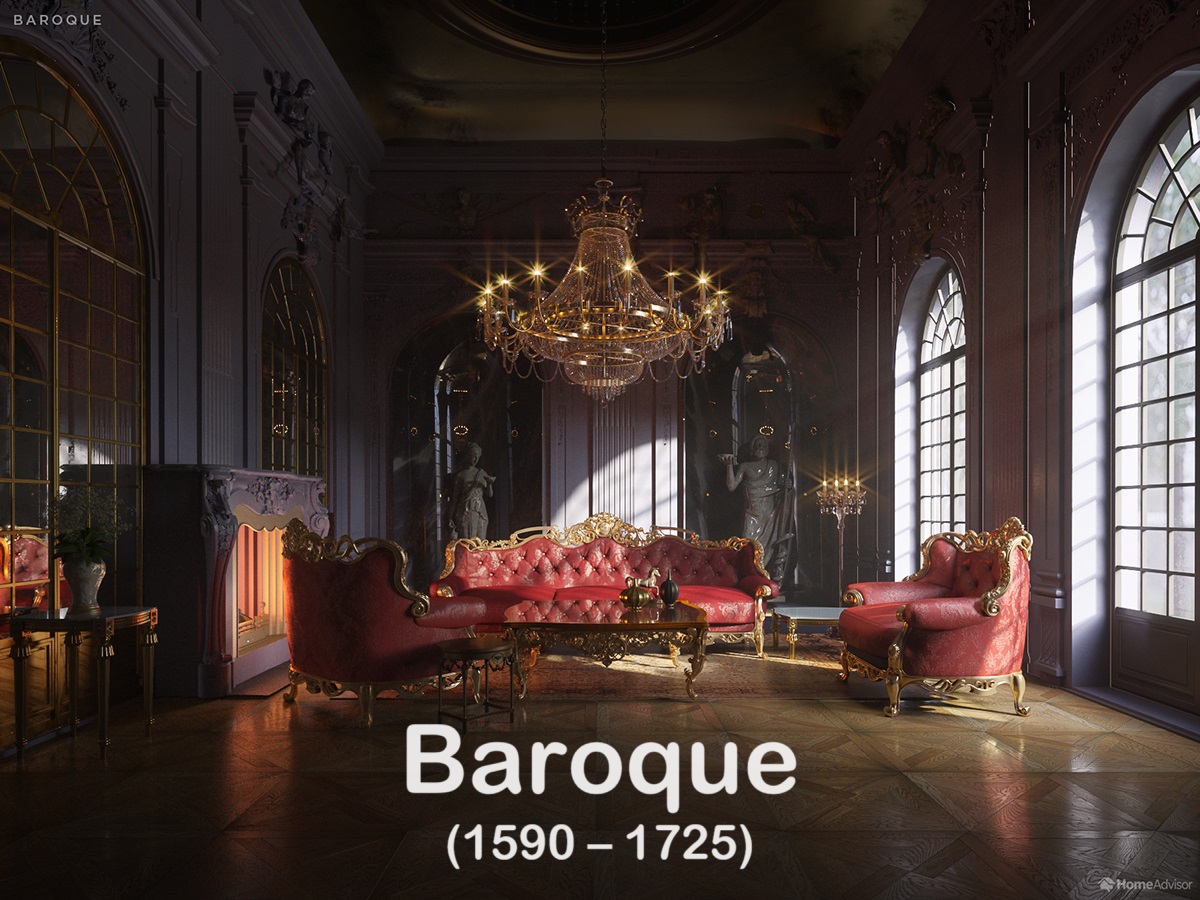
What changed: Courts and the Counter Reformation weaponize spectacle. Interiors are designed to overwhelm with swelling curves, gilded frames, mirrors, and chiaroscuro lighting. Everything plays with sheen and shadow to magnify scale.
Signatures: Carved and gilded wood, marquetry, mirror arrays multiplying candlelight, marble underfoot. Grand furniture silhouettes popularized at the French court.
Borrow it at home
- Pick one gilt statement piece such as a mirror or oversized frame.
- Stage lighting like a scene: a few warm pools of light against shadow.
- Counter glossy stone or brass with lush textiles for tactile contrast.
Stage trick: dim everything except your focal points for instant drama.
Rococo (early to mid 1700s) - Intimacy and Asymmetry
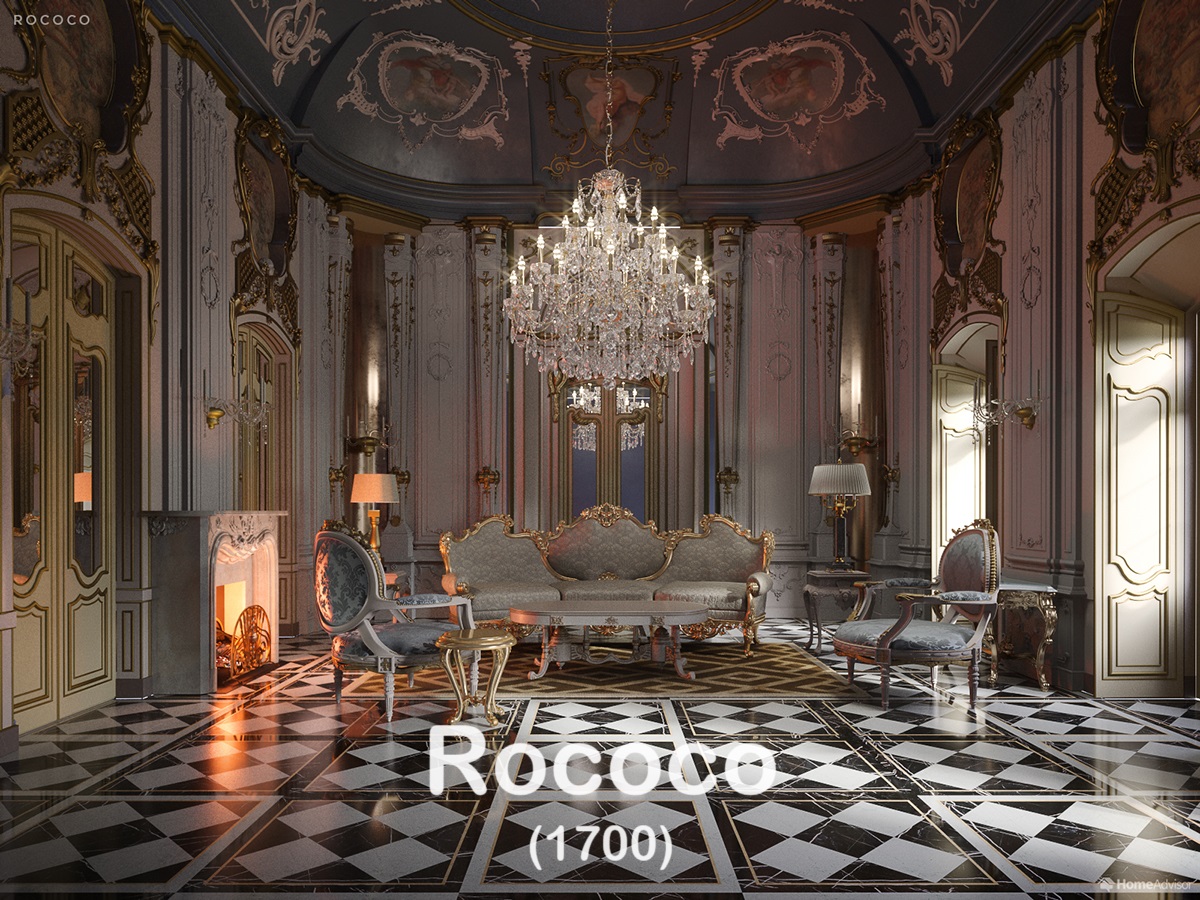
What changed: The salon replaces the nave. Rococo scales ornament for domestic sociability and elegance. Ornaments flow like conversation.
Signatures: Rocaille shellwork, acanthus, S and C scrolls, cabriole legs, asymmetry that still balances. Think Boucher gossiping with Watteau. For a concise primer on motifs and materials, the V and A Museum’s guide to Rococo style is excellent.
Borrow it at home
- Use one scalloped or shell framed mirror to set the tone.
- Choose pastels with warm neutrals and curved silhouettes.
- Prefer delicate carving over bulky mass.
Taste note: it is lighter Baroque, not sugary Baroque. The craft is serious, the mood is playful.
Neoclassical (c. 1780 to 1880) - Reason with Columns
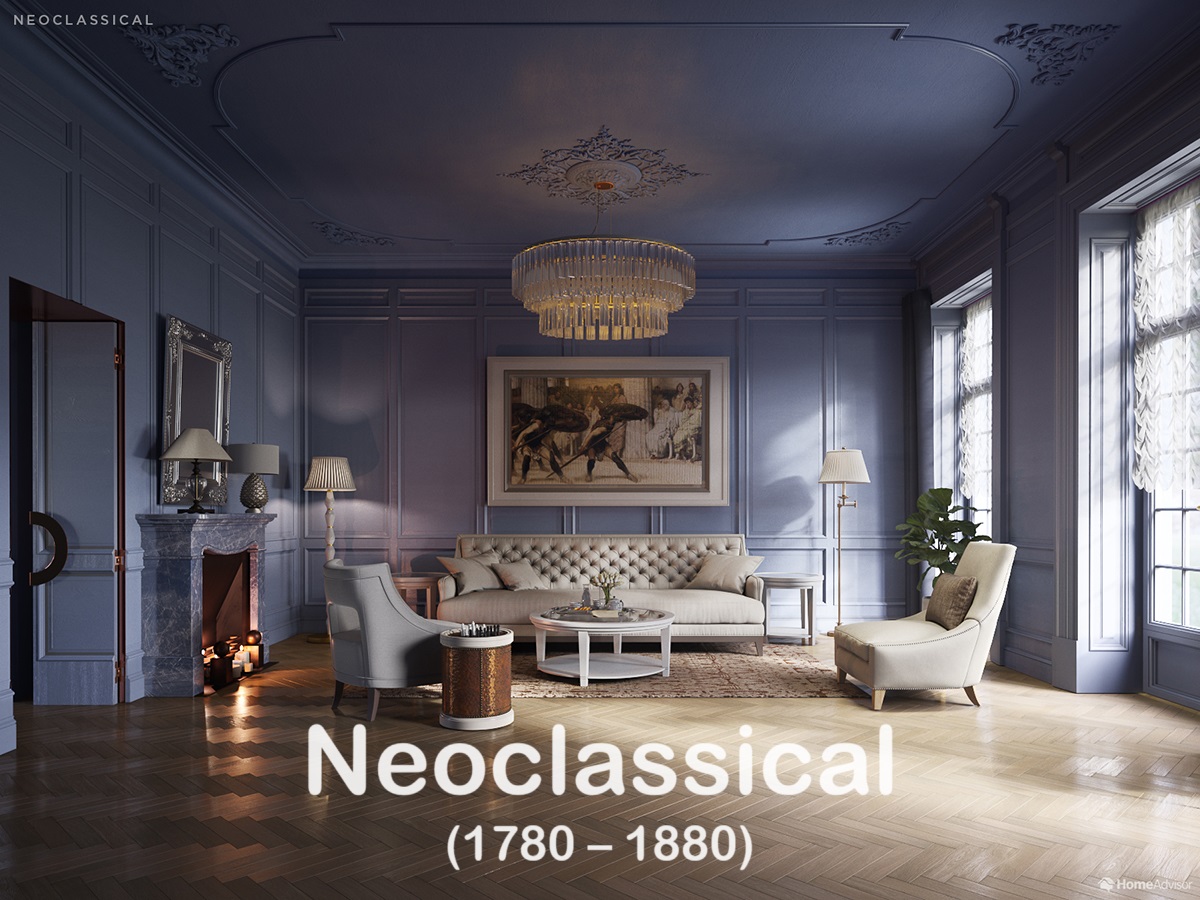
What changed: Excavations at Herculaneum and Pompeii plus Winckelmann’s writings recenter Greco Roman ideals. Interiors pivot to restraint, logic, and character.
Signatures: Calm palettes, rectilinear paneling, columnar chimneypieces, balanced symmetry, late Georgian composure.
Borrow it at home
- Install simple picture frame moldings to articulate walls.
- Use pale plaster tones with crisp white trim.
- Anchor with a pair of fluted lamps or an urn silhouette.
If Palladio were your contractor: he would charge extra for good proportions.
Arts and Crafts (c. 1860 to 1910) - Ethics of Making
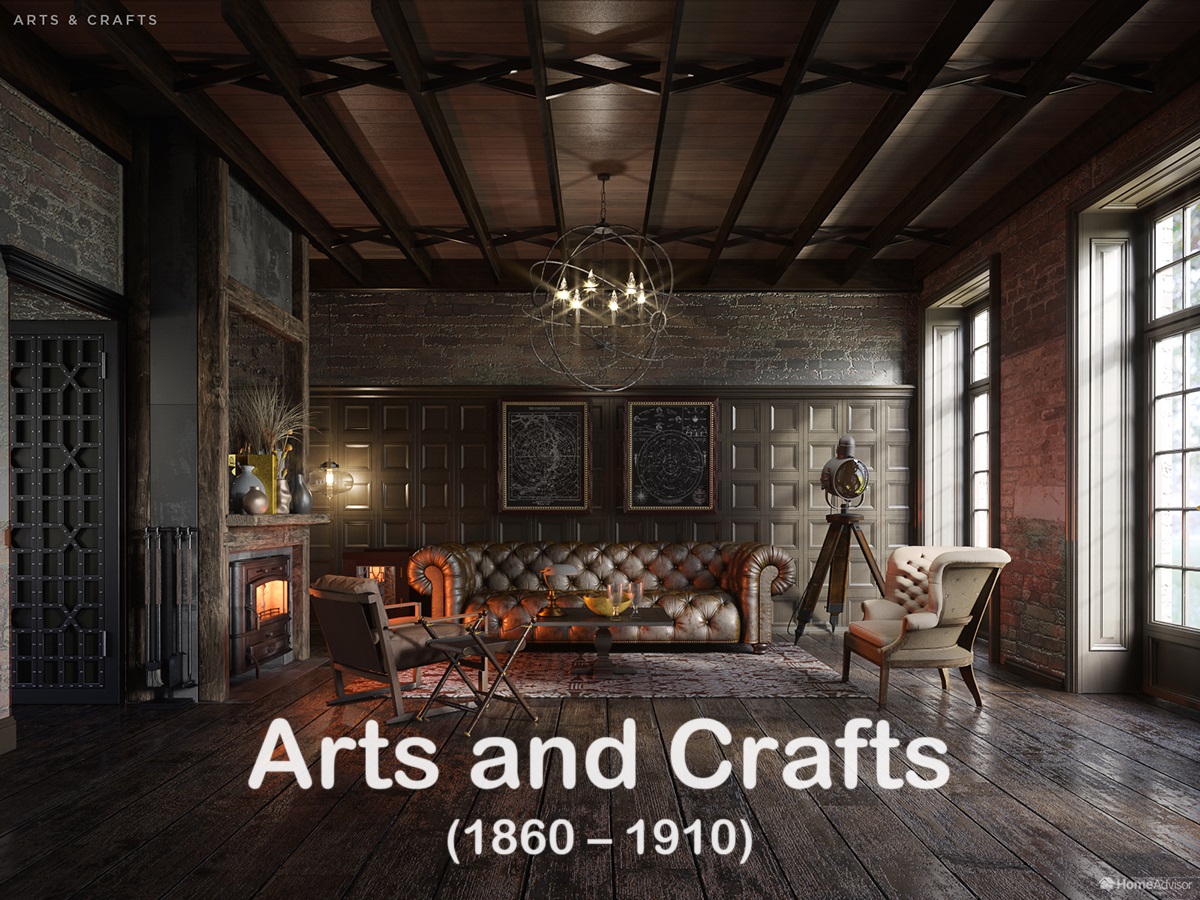
What changed: Ruskin and Morris critique dehumanizing industry. Design returns to honest materials and visible craft. The American branch embraces oak, mission lines, and utility through Stickley.
Signatures: Exposed joinery, quartersawn oak ray flakes, hammered brass, nature motifs, hand loomed textiles.
Borrow it at home
- Invest in one Stickley like piece with pegged joinery.
- Choose an earthy palette such as moss, umber, and brick with unlacquered metal.
- Bring in Morris pattern paper or a simple botanical stencil.
Anti trend trend: handmade ignores seasons and rewards patience.
Art Nouveau (c. 1890 to 1910 or 1920) - The Whiplash Line
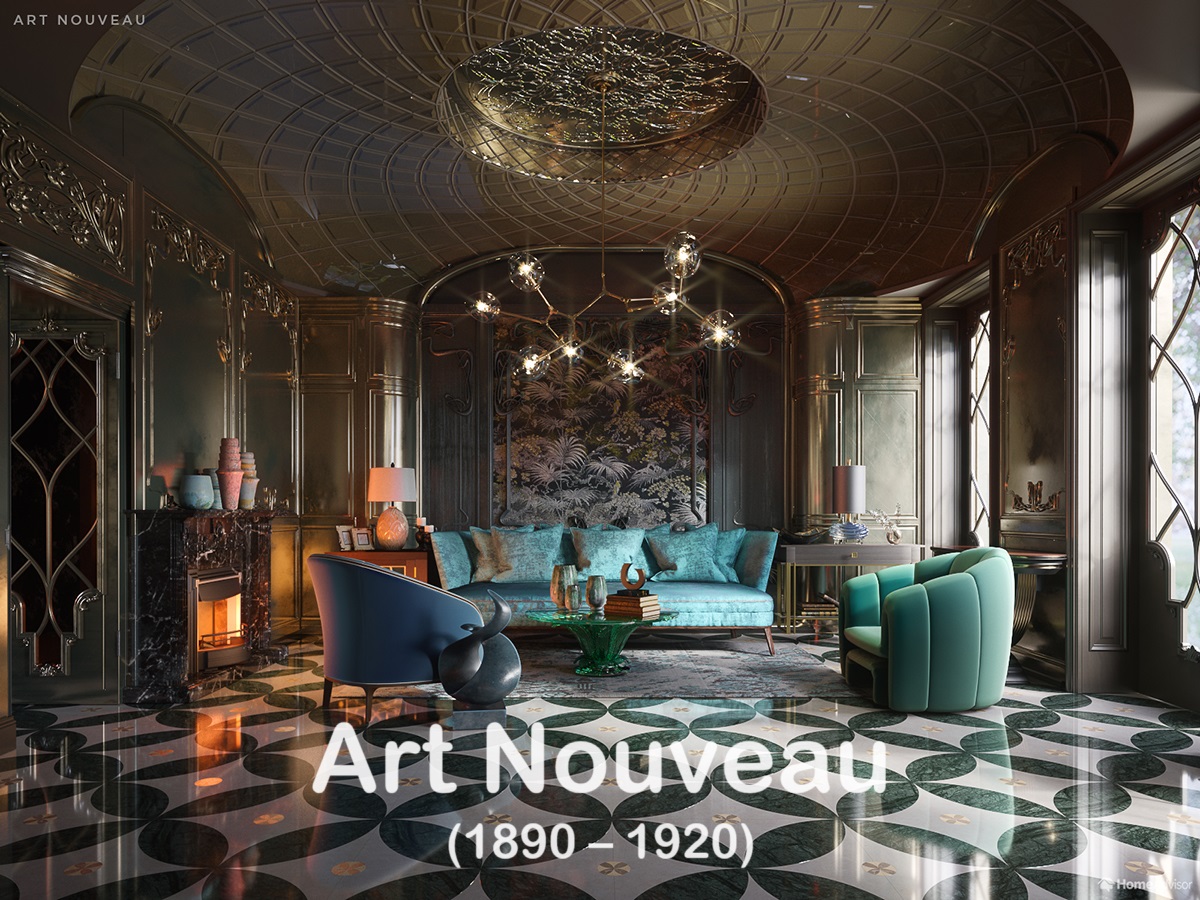
What changed: Designers merge craft with new techniques. Nature becomes structure, and Japanese art reframes composition and empty space.
Signatures: Sinuous whiplash curves, botanical ornament, expressive glass and iron. Tiffany’s Favrile glass turns illuminated plant forms into art furniture.
Borrow it at home
- Select one sculptural glass lamp or vine like metal piece as the protagonist.
- Use curvilinear mirror frames to soften a boxy room.
- Keep colors gentle so the form takes the lead.
Tip: add one Art Nouveau curve and your rectangles will behave.
Art Deco (1920s to 1960s) - Machine Glamour
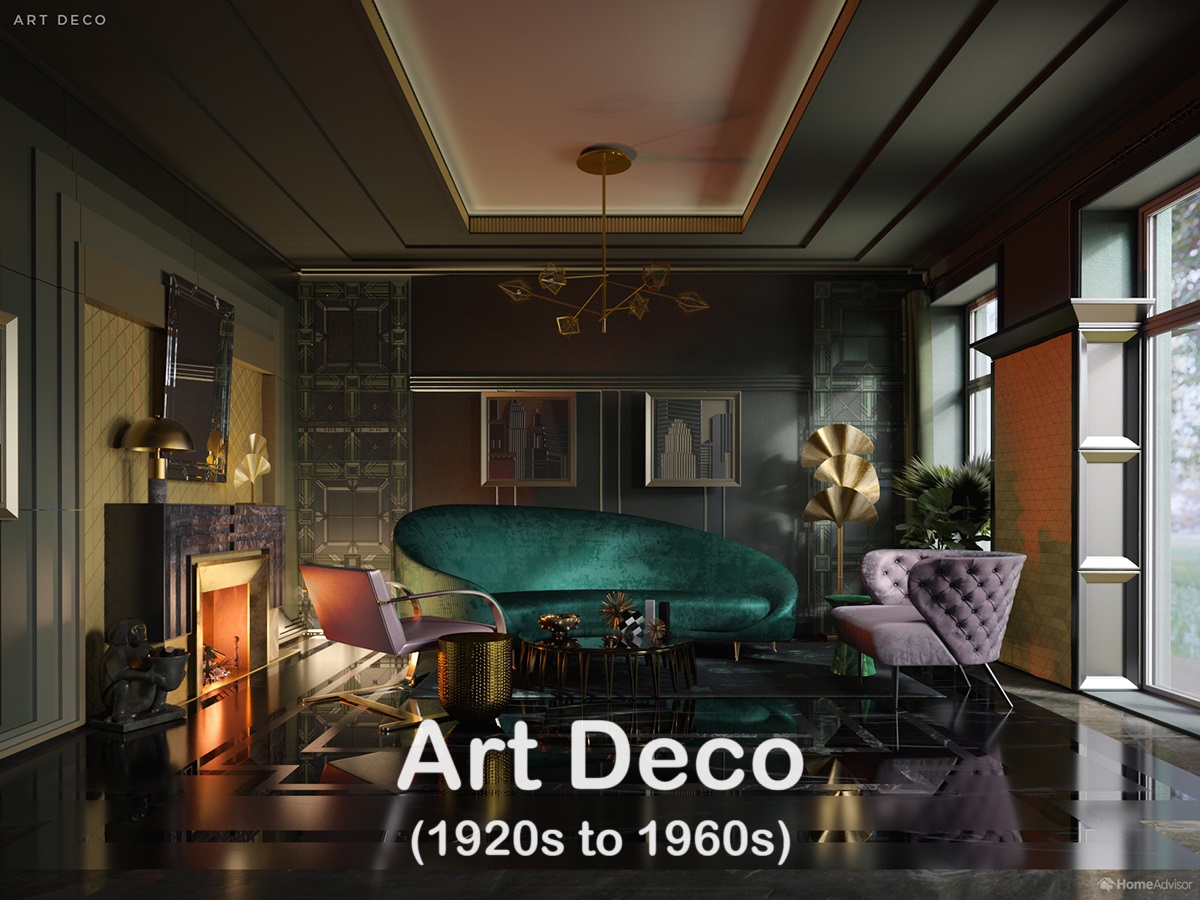
What changed: The machine age learns to dress. Geometry, speed, and skyscraper profiles meet audacious materials that mix glitter with craft.
Signatures: Sunbursts, zigzags, stepped profiles, heroic horizontals and verticals balanced by shell curves. Materials include chrome, lacquer, etched glass, and exotic veneers.
Borrow it at home
- Choose one high gloss piece such as a lacquered cabinet and pair with a geometric rug.
- Balance a sharp metal line with a curved, theatrical seat.
- Frame a focal wall with stepped trim or a sunburst mirror.
Elevator pitch: if Cubism took a ballroom class, you would get Deco.
Modernism (c. 1880 to 1940) - Form Follows Frictionless
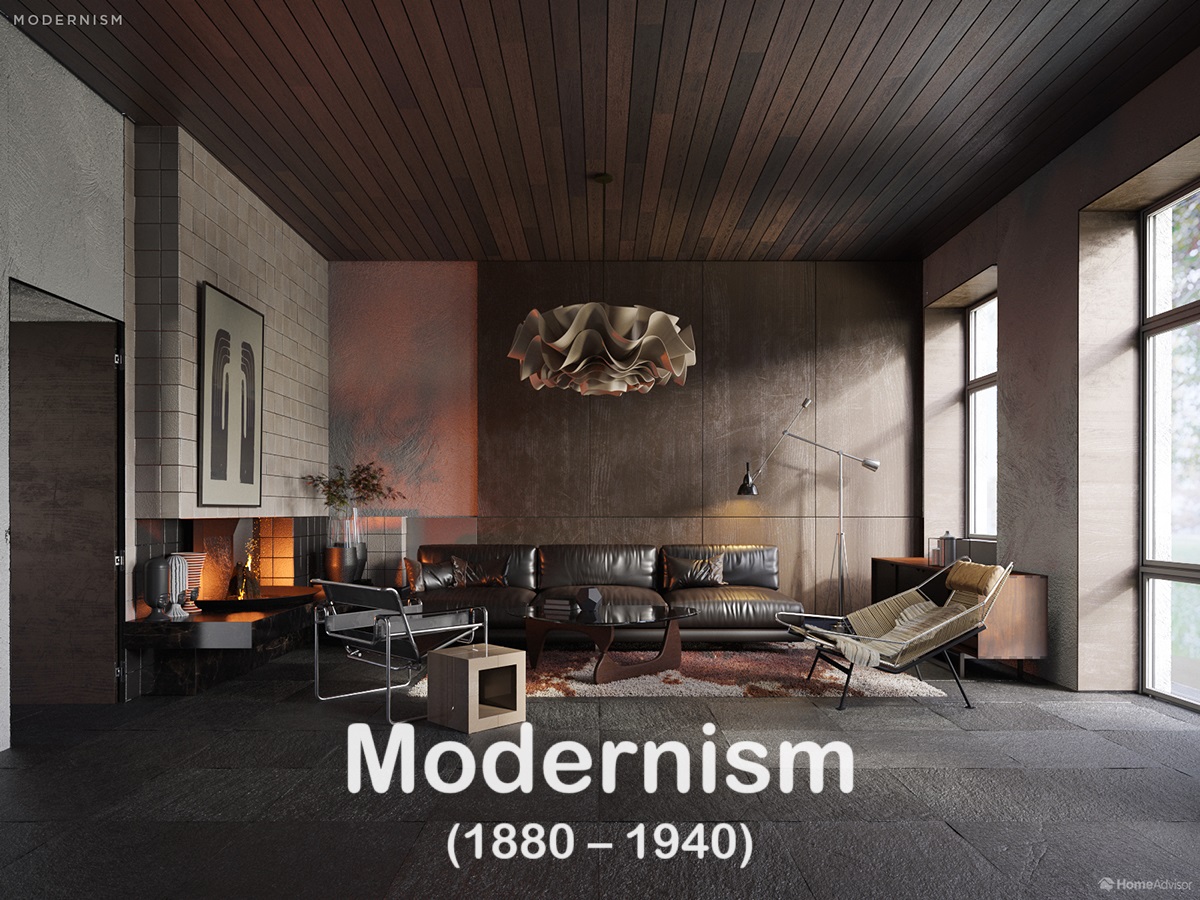
What changed: Le Corbusier calls the house a machine for living. Industrial materials and standardization make good design more accessible. Beauty emerges from solving real problems.
Signatures: Clear structures and objects reduced to essentials. The Noguchi table achieves drama with glass and two interlocking wood pieces. The Anglepoise task lamp borrows constant tension springs from engineering.
Borrow it at home
- Keep planes clean and avoid bolt on decoration.
- Use glass and open bases to maintain visual flow.
- Pick articulated task lighting that moves like a tool.
Modernism’s secret: constraints were the muse.
Bauhaus (1919 to 1933 or 1934) - Art, Craft, Industry
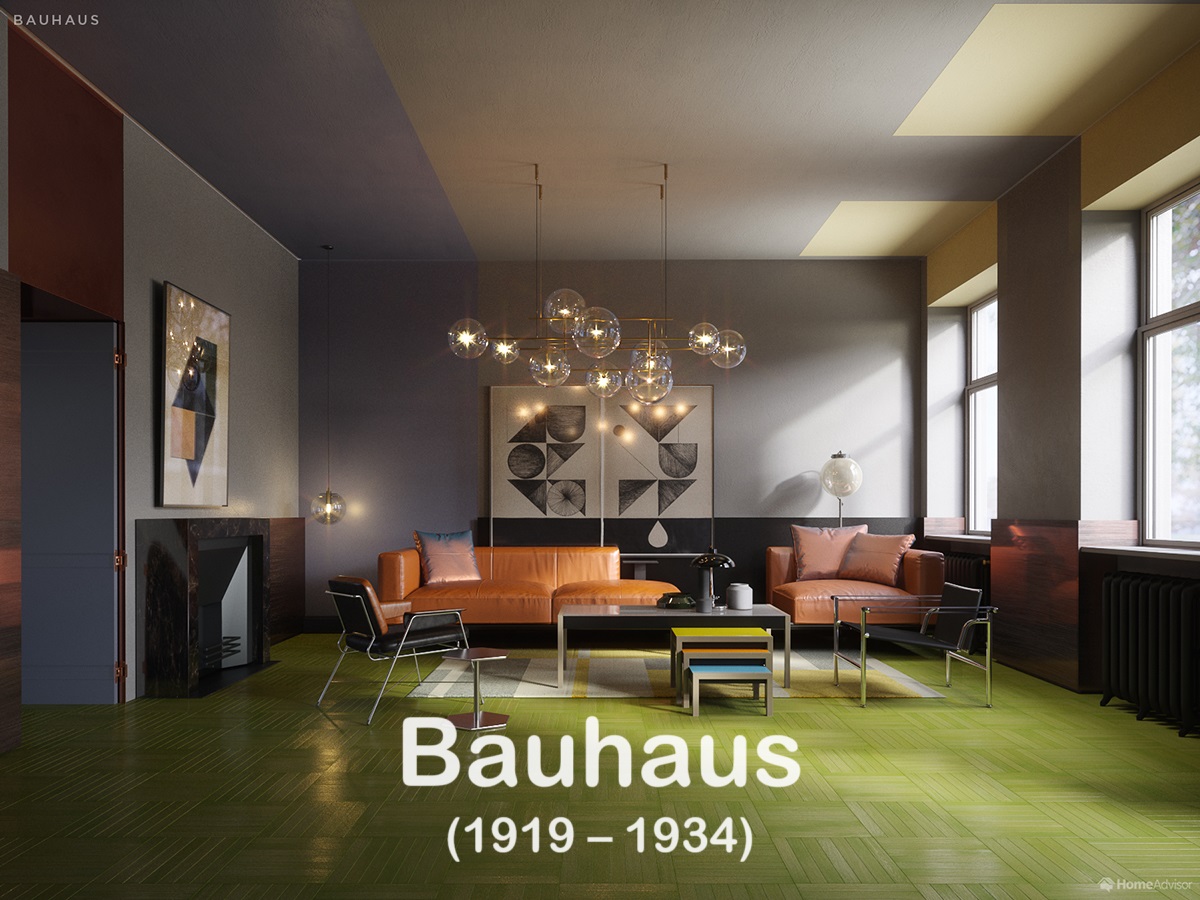
What changed: A short lived German school fuses workshops with theory. Materials are honest and forms elemental. Politics shutter the school, but its diaspora seeds global design education.
Signatures: Primary shapes, rational joinery, textiles as woven architecture. The Wagenfeld or Jucker table lamp stacks sphere, cylinder, and disc into quiet geometry.
Borrow it at home
- Choose geometric opal glass lighting.
- Add one graphic textile for rhythm without clutter.
- Show the structure and let the ego step back.
Myth busting: Bauhaus was not a single taste but a network that evolved across continents.
Mid Century Modern (1930s to today) - Warm, Human, Optimistic
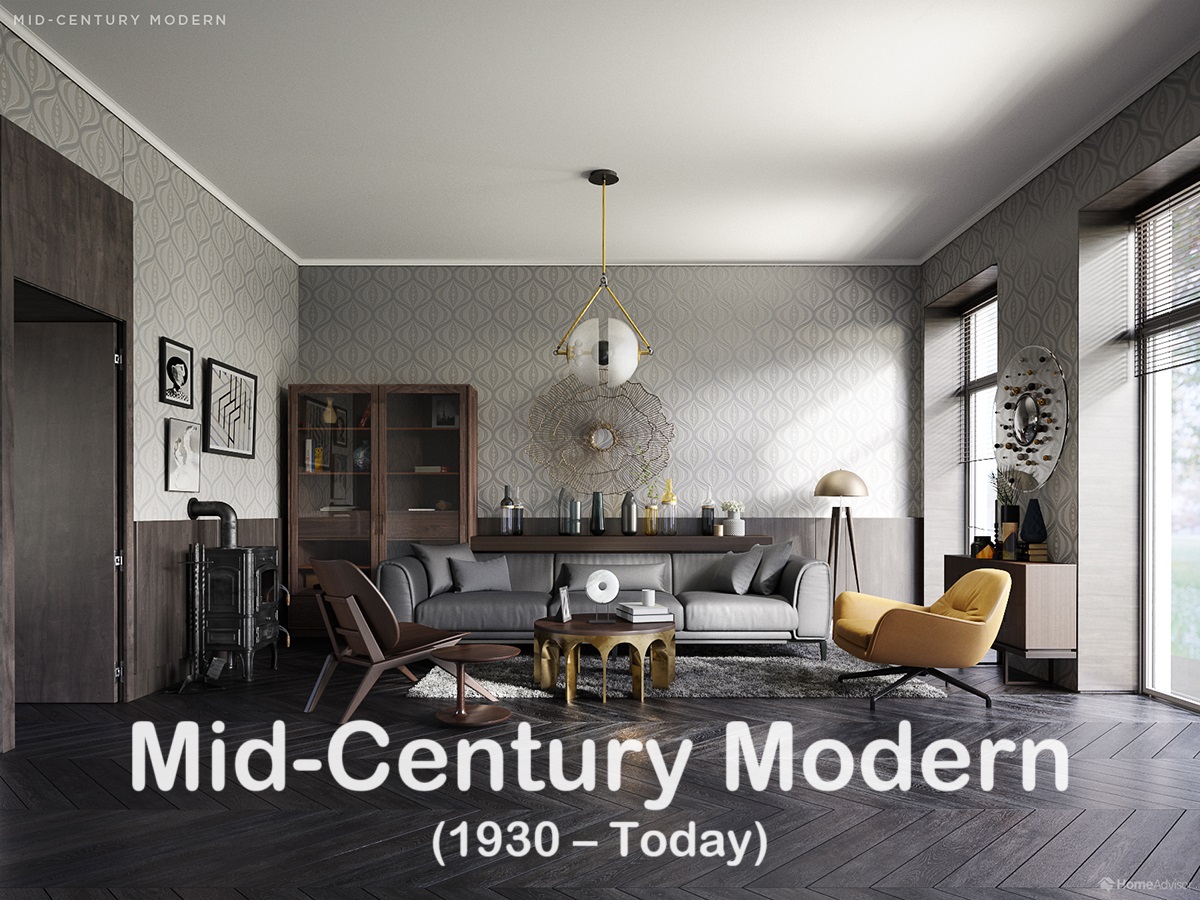
What changed: Modernism gets domestic. Scandinavian organicism meets Brazilian sensuality. Indoor and outdoor blur. Fewer drapes, more daylight.
Signatures: Warm woods, rattan and wicker, slim legs, one saturated accent such as mustard or teal. Canonical examples range from the Eames LCW to Finn Juhl’s sculptural teak and Sergio Rodrigues’s generous lounge chairs.
Borrow it at home
- Pick one bold hue against wood and off whites.
- Mix natural fibers such as a rattan chair with a jute rug.
- Use sculptural yet simple lighting as a focal point.
Design party trick: limit to three materials and let shape do the flirting.
Postmodern (late 1970s to today) - Irony with Laminate
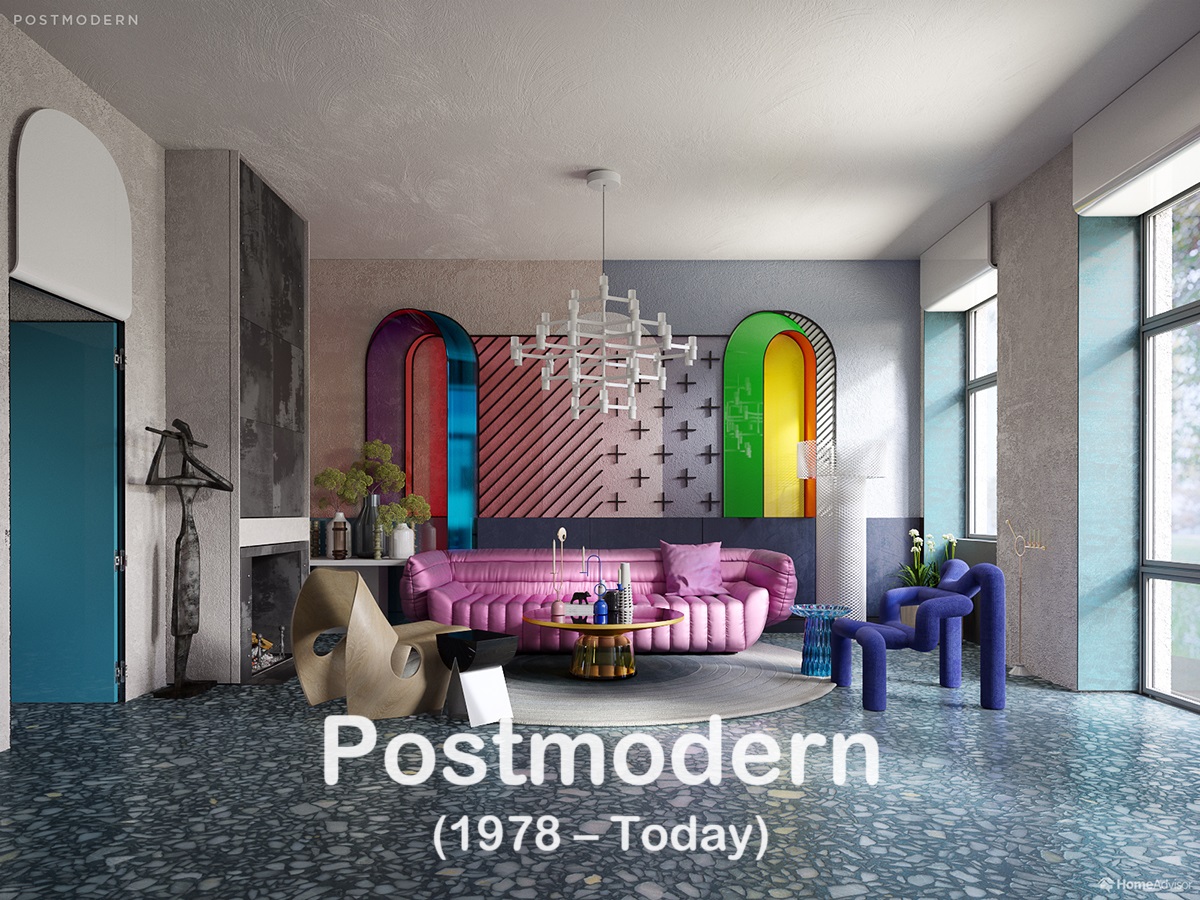
What changed: Venturi quips that less is a bore. The Memphis Group arrives in 1981 with color, kitsch, and jokes you can sit on. High and low culture blend. Warhol smiles from a Brillo pedestal while Michael Graves puts a bird on a kettle.
Signatures: Historic forms remixed, optical gags, bright laminates used like couture. Sottsass’s Carlton room divider becomes the totem of the mood.
Borrow it at home
- Choose one unmistakably tongue in cheek piece such as a Memphis style side table.
- Clash a classical outline with pop color.
- Use geometry as pattern rather than structure.
Koons caveat: irony dates faster than marble. Use a light touch.
Contemporary (1980s to today) - Edit to Breathe
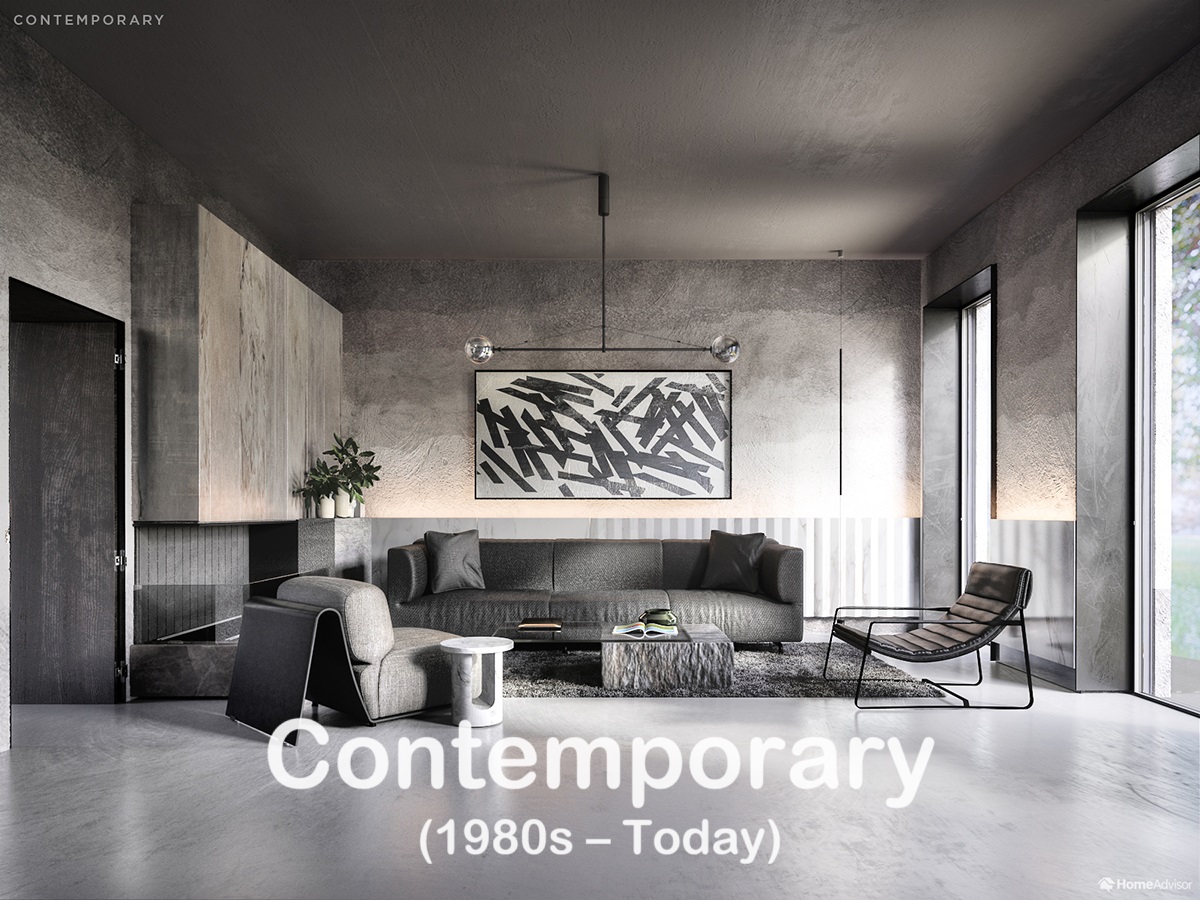
What changed: Today’s contemporary interior borrows modern clarity and mid century airiness, then adds material honesty and sculptural light. Trend aware, not period bound.
Signatures: Clean lines, neutral base with one decisive gesture such as artwork, a linear pendant, or textured plaster. Layered textures take priority over loud color.
Borrow it at home
- Clear surfaces and scale up a single abstract work.
- Vary texture more than color using plaster, wool, and stone.
- Install a linear or halo pendant to quietly widen the room.
If minimalism feels cold: warm it with natural fibers and one gentle curve.
How to Mix Eras Like a Curator
- Choose a governing geometry. Commit to curves or straights, then add a single contrary piece for tension.
- Limit the palette. Three to four hues across centuries. Let variation live in texture.
- Anchor with a type specimen. One authentic piece such as a Craftsman chair, an Eames LCW, or a Memphis pedestal. The real thing calibrates everything around it.
- Let lighting narrate. Bauhaus opal glass beside a Deco mirror sets a clear rhythm for the eye.
Common Myths, Debunked
- Rococo is just Baroque with pastels. Not quite. Asymmetry and intimacy are conceptual shifts, not palette swaps.
- Modern equals contemporary. Modern refers to specific movements such as Bauhaus and International Style. Contemporary is now and evolves constantly.
- Bauhaus was a single taste. Faculty and graduates dispersed and diversified. The idea traveled and changed with context.
For a clear big picture of how interiors dovetail with broader art history, explore the Met Museum’s Heilbrunn Timeline of Art History.
Timeline Cheat Sheet
Renaissance → Baroque → Rococo → Neoclassical → Arts & Crafts → Art Nouveau → Art Deco → Modernism/Bauhaus → Mid-Century Modern → Postmodern → Contemporary
Trade, technology, and ideology are the quiet co authors in every room. If you enjoy mapping movements across objects and interiors, the Cooper Hewitt Design History Timeline is a handy complement to this overview.
Visualizations and concept: HomeAdvisor


